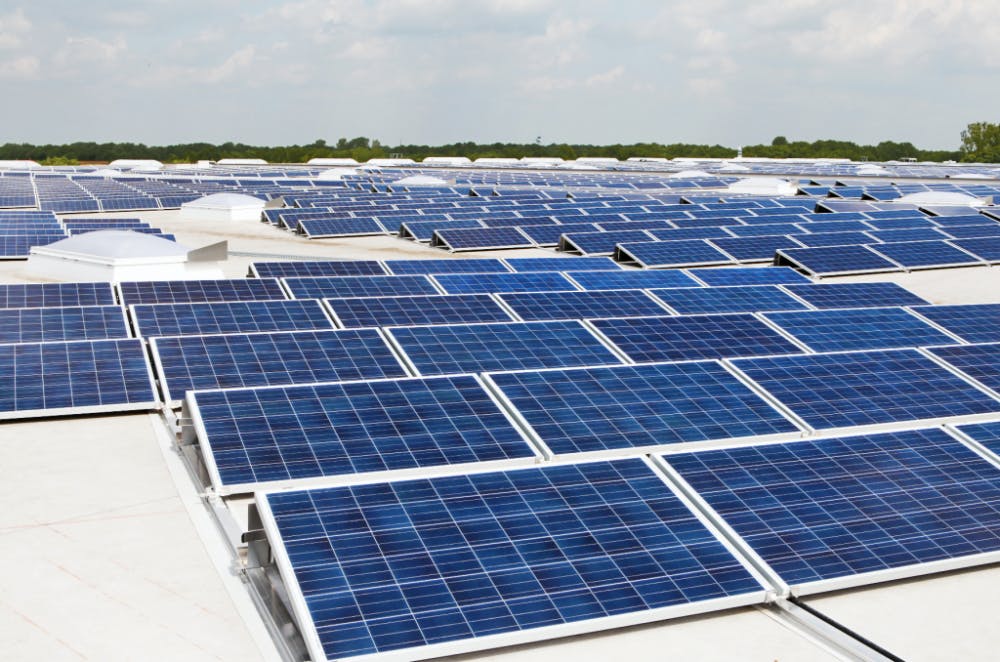New research, led by Xiaoyang Zhu, a professor of chemistry at Columbia University, reveals the potential of using a new kind of material, hybrid organic-inorganic perovskites (HOIPs), to manufacture solar cells. The results conclude that HOIPs can achieve much higher solar efficiencies than traditional solar cells, which are typically made out of silicon.
“The need for renewable energy has motivated extensive research into solar cell technologies that are economically competitive with burning fossil fuel,” Zhu said according to Columbia News.
Zhu participates in the fastest advancing solar cell research, exploring perovskite cells Its high efficiency and low production cost potential make it what Zhu calls a “superstar” in the solar cell research field. His team explored the mysterious properties of HOIPs and published their findings in Science.
Solar cells convert sunlight into electrical energy. Through this conversion, energized electrons travel through the cell and excess energy is dissipated. The percentage of sunlight that can be converted into electricity is defined as the solar efficiency. Researchers have found that the maximum theoretical efficiency of a solar cell is about 33 percent.
The application of HOIPs in solar cells began in 2006 with efficiencies of less than four percent. According to the Department of Energy, researchers in 2014 improved the materials, processes and design of HOIPs so that the efficiencies reached 20 percent. In Zhu’s research, he claims that HOIPs can achieve theoretical efficiencies up to 66 percent, nearly double the maximum expected efficiency limit.
Beyond its potential for immense solar efficiencies, HOIPs have another tremendous advantage over traditional solar cells because they are much more durable than silicon solar cells. HOIPs have high defect density, which means that they can perform as well as pristine and defect-free cells made of HOIPs.
Traditional silicon solar cells are fragile. One defect can significantly reduce their efficiency or even disrupt the operation of the entire cell. Defects in a traditional solar cell can cause a disruption on the charges in the cell, which prematurely dissipates the unconverted charges before they become converted into electricity.
Traditional solar cells are also very costly. The silicon that is used must have a 99.999 percent purity and manufacturing process is very expensive. According to the Department of Energy, HOIPs can be cheaply constructed with abundant, low-cost materials.
Zhu pointed out that over the past seven years, scientists were able to improve the efficiency of HOIPs from four to 22 percent. On the other hand, it took over six decades to create the silicon cells that have the same efficiency as HOIPs.
These cells, according to the researchers, have little potential for improvement compared to HOIPs because they are limited to the maximum theoretical efficiency of 33 percent. At the rate that HOIPs are improving, they are likely to surpass traditional solar cells in terms of their feasibility to compete with fossil fuels.
However, HOIPs are not without constraints. The current chemical stability of HOIPs is weaker than that of materials used in traditional cells. HOIPs are water soluble and contain environmentally harmful components such as lead that could leak to the outside environment. The environmental risks of using HOIPs must be contained for the possibility of its commercial application.
Zhu is confident that material scientists can replace the toxic materials with safer alternatives.
“Now we can go back and design materials which are environmentally benign and really solve this problem everybody is worried about,” Zhu said according to Columbia News.

















